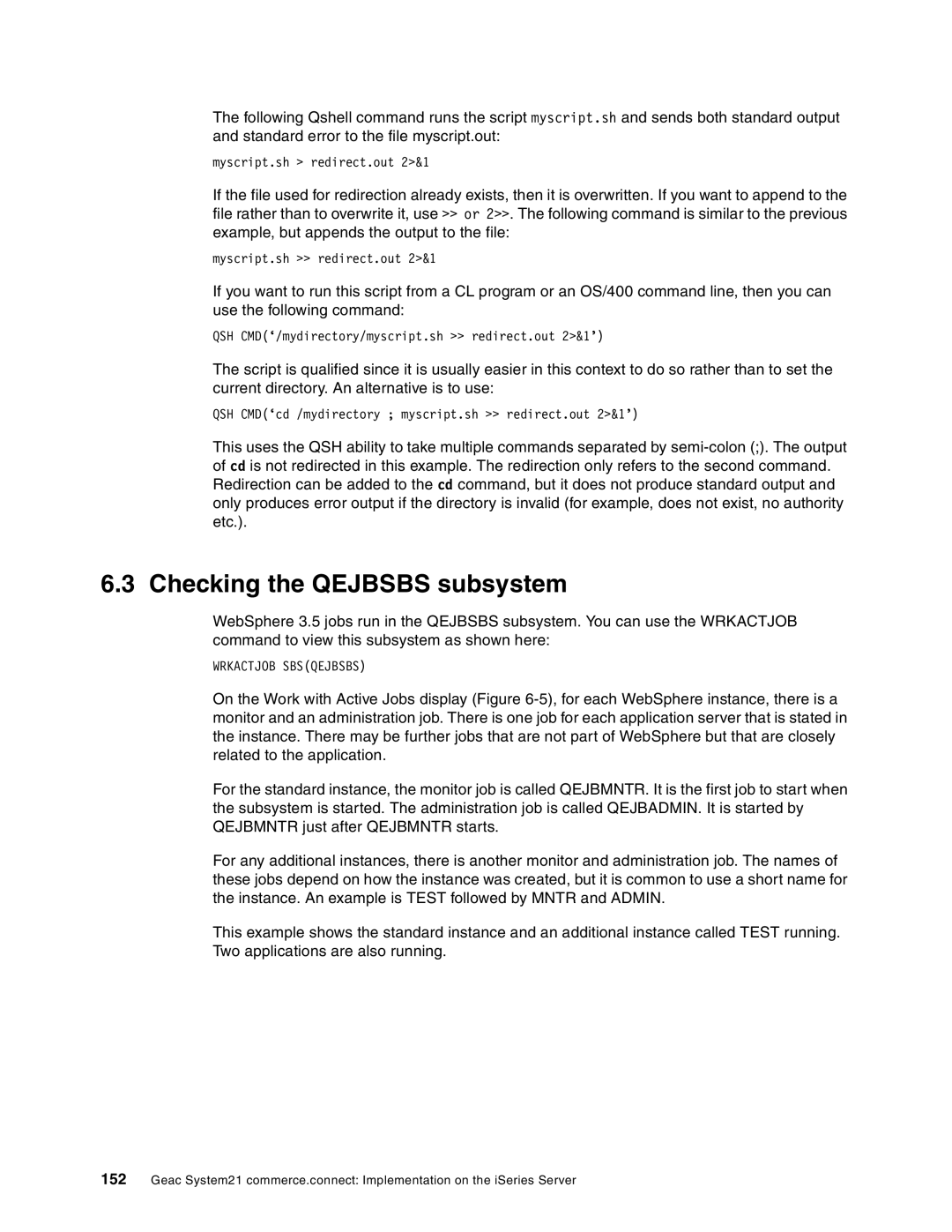The following Qshell command runs the script myscript.sh and sends both standard output and standard error to the file myscript.out:
myscript.sh > redirect.out 2>&1
If the file used for redirection already exists, then it is overwritten. If you want to append to the file rather than to overwrite it, use >> or 2>>. The following command is similar to the previous example, but appends the output to the file:
myscript.sh >> redirect.out 2>&1
If you want to run this script from a CL program or an OS/400 command line, then you can use the following command:
QSH CMD(‘/mydirectory/myscript.sh >> redirect.out 2>&1’)
The script is qualified since it is usually easier in this context to do so rather than to set the current directory. An alternative is to use:
QSH CMD(‘cd /mydirectory ; myscript.sh >> redirect.out 2>&1’)
This uses the QSH ability to take multiple commands separated by
6.3 Checking the QEJBSBS subsystem
WebSphere 3.5 jobs run in the QEJBSBS subsystem. You can use the WRKACTJOB command to view this subsystem as shown here:
WRKACTJOB SBS(QEJBSBS)
On the Work with Active Jobs display (Figure
For the standard instance, the monitor job is called QEJBMNTR. It is the first job to start when the subsystem is started. The administration job is called QEJBADMIN. It is started by QEJBMNTR just after QEJBMNTR starts.
For any additional instances, there is another monitor and administration job. The names of these jobs depend on how the instance was created, but it is common to use a short name for the instance. An example is TEST followed by MNTR and ADMIN.
This example shows the standard instance and an additional instance called TEST running. Two applications are also running.
152Geac System21 commerce.connect: Implementation on the iSeries Server
